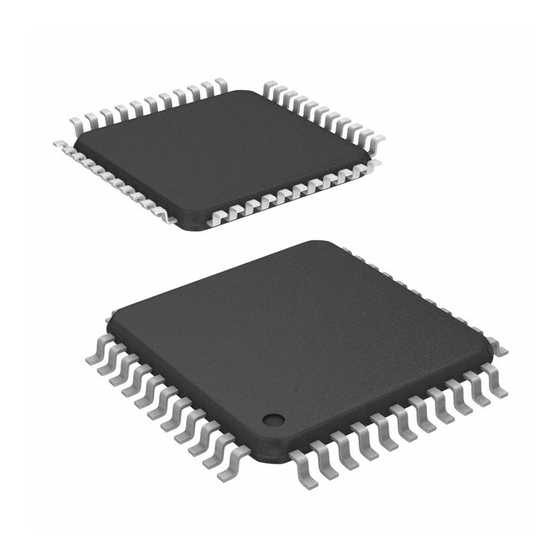Table of Contents
Advertisement
Quick Links
Features
®
•
AVR
– High-performance and Low-power RISC Architecture
– 118 Powerful Instructions – Most Single Clock Cycle Execution
– 32 x 8 General-purpose Working Registers
– Up to 8 MIPS Throughput at 8 MHz
•
Data and Nonvolatile Program Memories
– 4K/8K Bytes of In-System Programmable Flash
SPI Serial Interface for In-System Programming
Endurance: 1,000 Write/Erase Cycles
– 256/512 Bytes EEPROM
Endurance: 100,000 Write/Erase Cycles
– 256/512 Bytes Internal SRAM
– Programming Lock for Software Security
•
Peripheral Features
– 8-channel, 10-bit ADC
– Programmable UART
– Master/Slave SPI Serial Interface
– Two 8-bit Timer/Counters with Separate Prescaler and Compare Mode
– One 16-bit Timer/Counter with Separate Prescaler, Compare and
Capture Modes and Dual 8-, 9- or 10-bit PWM
– Programmable Watchdog Timer with On-chip Oscillator
– On-chip Analog Comparator
•
Special Microcontroller Features
– Power-on Reset Circuit
– Real-time Clock (RTC) with Separate Oscillator and Counter Mode
– External and Internal Interrupt Sources
– Three Sleep Modes: Idle, Power Save and Power-down
•
Power Consumption at 4 MHz, 3V, 20°C
– Active: 6.4 mA
– Idle Mode: 1.9 mA
– Power-down Mode: <1 µA
•
I/O and Packages
– 32 Programmable I/O Lines
– 40-pin PDIP, 44-pin PLCC and 44-pin TQFP
•
Operating Voltages
– V
: 4.0 - 6.0V AT90S4434/AT90S8535
CC
– V
: 2.7 - 6.0V AT90LS4434/AT90LS8535
CC
•
Speed Grades:
– 0 - 8 MHz AT90S4434/AT90S8535
– 0 - 4 MHz AT90LS4434/AT90LS8535
Pin Configurations
8-bit
Microcontroller
with 4K/8K
Bytes In-System
Programmable
Flash
AT90S4434
AT90LS4434
AT90S8535
AT90LS8535
Preliminary
Rev. 1041F–10/00
1
Advertisement
Table of Contents














Need help?
Do you have a question about the AVR AT90S4434 and is the answer not in the manual?
Questions and answers